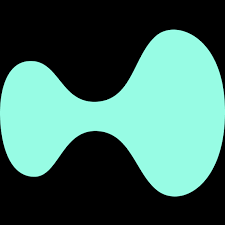Inside Ten Pound Poms and Adolescence star Faye Marsay’s rise to fame – ‘one true love’; social media ‘backlash’; Jill Scott ‘rivalry’;
Ten Pound Poms star Faye Marsay’s career has been going from strength to strength recently, having appeared in a string of huge shows, including Netflix smash Adolescence.
From getting backlash over a major role to her ‘rivalry’ with Jill Scott, here’s an inside look at the Middlesbrough-born star’s life and career.
Faye Marsay’s rise to fame
Born in Middlesbrough in December 1986, Faye – now 38 – comes from a “typical working class Northern family”. Her mum works as a secretary for the NHS, and her dad is a steelworker and a firefighter.
She landed her first major role in 2008, when she appeared in the movie Helen.
A role in the historical comedy movie Pride followed, as did starring roles in The White Queen on BBC One, Fresh Meat and My Mad Fat Diary.
In 2014, Faye appeared in the Doctor Who Christmas special alongside Peter Capaldi. However, it was her role in Game of Thrones that catapulted her onto the international stage.
The star played the role of The Waif during seasons 5 and 6. Her role in the series was to train Arya Stark during her time in the House of Black and White.
Not only did The Waif torture Arya, but she also tried to kill her.

‘Backlash’ over Game of Thrones role
Speaking to The Independent in 2023, Faye explained that she’d received a bit of backlash for the role in Game of Thrones.
“After Thrones came out, there was quite intense backlash at one point,” she said.
“Just because of the character I played. [The fans] hated her. Because Maisie [Williams]’ character was, like, the one – and there I am, hitting her with a stick,” she then continued.
Unfortunately, some fans couldn’t tell the difference between fact and fiction, leading to the backlash intensifying. Faye was forced to remove herself from social media for a while until it all died down.
Her digital footprint is still tiny for someone of her star status, though, and that’s a conscious decision. She told the paper: “The thing is, you’ve got to keep something for yourself. This relentless throwing out of who you are. You leave yourself with nothing for you, or your family, or people that look you in your eyeballs instead of through a screen. Those are the people that deserve energy, and they don’t get it if all you’re doing is giving yourself away on the internet every day.”
Faye is also very private about her personal life. As a result, it’s not known if she’s married or even in a relationship.

‘Challenging’ move
Hailing from the north, Faye was forced to move to London for work – an experience she confessed to finding “challenging”.
Speaking to The Protagonist Magazine, she said: “I found it difficult for the first year I was here, to be honest. The pace and the sheer volume of people took some getting used to. It is an amazing city, though, and I love how there is always something to do or see here,” she then added.
I love it and miss it all the time.
She also spoke fondly of her hometown in the interview.
“It’s where my family is and my oldest friends. The people there are hard-working, lovely and good humoured. The area has had a lot to deal with recently, and yet it still powers on. I love it and miss it all the time,” she confessed.

‘Rivalry’ with Jill Scott
Back before her acting days, Faye was a keen footballer and even played for her local team in Middlesbrough.
It was here that she faced off against future Lioness legend (and I’m A Celebrity winner), Jill Scott. England hero Jill is from nearby Sunderland, and is the same age as Faye.
Speaking to Principle Magazine recently, Faye spoke about the “amazing” experience of playing against Jill.
“I loved football. When I was really young, I played for a local team in Middlesbrough, and they were a great bunch of girls. Sometimes, I played against Jill Scott, which is amazing. She played for a team called Boldon, and we faced each other as kids,” she said.
“She probably doesn’t remember me now, but I distinctly remember this tall, brilliant girl. Their team was excellent. Football was massive in my family — it’s like a religion back home.”
Faye previously said that football was her “one true love” until the age of 16, when, sadly, a knee injury put paid to her footballing career.

Ten Pound Poms star Faye Marsay on ‘imposter syndrome’
Following on from her Game of Thrones role, Faye has continued to star in movies and TV shows. In 2016, she appeared in Vera, and starred in the Black Mirror episode Hated by the Nation.
2017 saw her star in Gary Oldman’s The Darkest Hour and alongside David Tennant in You, Me and Him. In 2022, Faye entered the Star Wars universe, portraying Vel Sartha in the hit Disney+ show Andor. She is expected to return in the role in series two later this year.
Given the high-profile roles she’s landed, Faye admitted to Principle that she does get “imposter syndrome from time to time”. However, she added that she knows she’s “very lucky” and doesn’t taken anything for granted.
In 2023, she made her debut in Ten Pound Poms as Annie, a role she has returned to for series two, which is currently airing on BBC One.
She recently expressed interest in doing another series. “If people want to see more then of course, I would be open to doing it. But we don’t know yet,” she told The Sun.
Faye on working with Stephen Graham in Adolescence
She was most recently in Netflix’s mega-hit Adolescence, playing the role of DS Misha Frank, featuring heavily in the first two episodes.
Gushing over the show recently to Principle Magazine, she said: “What struck me most when I read the script was how current it was, how necessary the conversation is, and how important it is to explore these issues through art – whether that’s TV or film – to facilitate discussion.”
She was also full of praise for its co-creator Stephen Graham: “Stephen creates an environment where everyone feels valued, no matter their role. It’s like a football team – he’s the Pep Guardiola, and we’re all working toward winning a championship. He genuinely wants everyone to be at their best and fights for every single person on set. It’s a really safe and supportive environment to be in.
“He genuinely cares – not just about the work, but about the people involved in making it. I don’t want to sound gushy, but he’s a really lovely man who cares about his job and about everybody else.”
Read more: All the clues Netflix will commission series 2 of Adolescence
Ten Pound Poms continues tonight (Sunday, March 30) at 8pm on BBC One and BBC iPlayer. You can stream Adolescence on Netflix now.
Are you a fan of Faye Marsay in Ten Pound Poms and Adolescence? Tell us on our Facebook page @EntertainmentDailyFix.





 Nyan Heroes Playtest 4 is officially HERE!
Nyan Heroes Playtest 4 is officially HERE! 
 pic.twitter.com/kt1OyzYpcQ
pic.twitter.com/kt1OyzYpcQ




















 ️https://t.co/k0GDZgckLT
️https://t.co/k0GDZgckLT



 pic.twitter.com/ZQgs35IMFr
pic.twitter.com/ZQgs35IMFr














